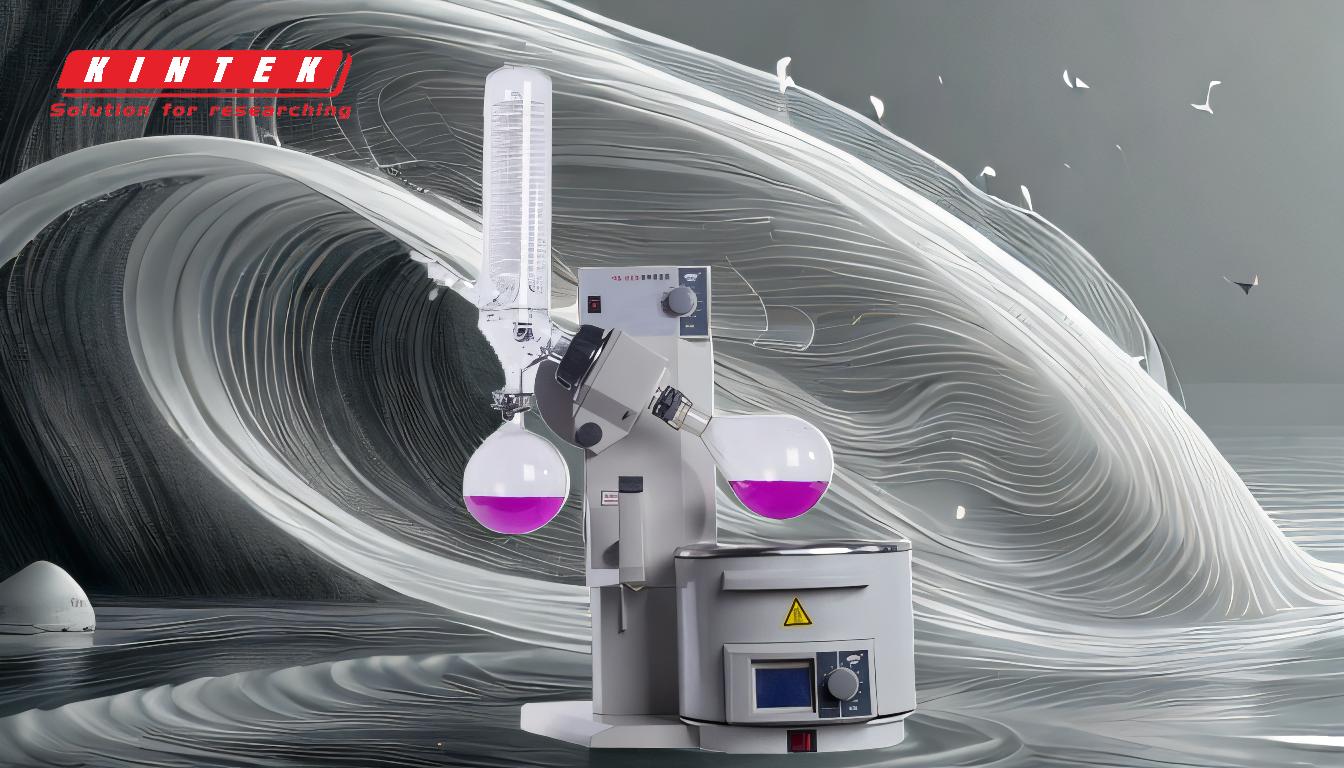The temperature of a rotary evaporator water bath depends on the solvent being evaporated and the specific requirements of the process. For most common lab solvents, temperatures between 25°C and 50°C are sufficient, as this range balances efficiency and safety. Lower temperatures reduce the risk of bumping but may slow the evaporation process. The water bath temperature should never exceed the boiling point of the solvent to avoid decomposition or excessive cooling. For volatile solvents, a room temperature water bath is recommended. Tools like a manometer and distillation nomograph can help determine the optimal temperature. Always refer to your SOP for specific guidelines.
Key Points Explained:

-
Temperature Range for Common Solvents:
- Most common lab solvents require a water bath temperature between 25°C and 50°C.
- This range ensures efficient evaporation while minimizing risks like bumping or solvent decomposition.
-
Importance of Avoiding Excessive Heat:
- The water bath temperature should never exceed the boiling point of the solvent.
- Excessive heat can lead to decomposition of sensitive compounds, such as organometallics, or cause excessive cooling in the flask for volatile solvents.
-
Trade-off Between Temperature and Evaporation Speed:
- Lower temperatures (e.g., 25°C) slow down the evaporation process but reduce the likelihood of bumping.
- Higher temperatures (e.g., 50°C) speed up evaporation but increase the risk of bumping and potential solvent loss.
-
Special Considerations for Volatile Solvents:
- For very volatile solvents, a room temperature water bath is often necessary to prevent excessive cooling and ensure safe evaporation.
- This is particularly important for solvents like ethanol, where precise temperature control is critical.
-
Ethanol Extraction Example:
- For ethanol extraction, the water bath temperature is typically set 20°C higher than the desired vapor temperature.
- The recommended vapor temperature for ethanol is 15-20°C, ensuring efficient recovery and minimizing solvent loss.
-
Tools for Temperature Optimization:
- Use tools like a manometer and distillation nomograph to determine the optimal temperature for your specific solvent and process.
- These tools help balance efficiency and safety by providing precise control over the evaporation conditions.
-
Water Bath Temperature Capacity:
- Rotary evaporator water baths typically operate within a range of room temperature +5°C to 95°C.
- Ensure your water bath has the appropriate temperature capacity for your specific application.
-
Referencing Standard Operating Procedures (SOPs):
- Always consult your SOP for specific temperature guidelines tailored to your process and solvent.
- SOPs provide critical information to ensure consistent and safe operation of the rotary evaporator.
-
Digital Water Bath Features:
- Modern digital water baths offer PID temperature control with increments as small as 0.1°C.
- This precision allows for fine-tuning of the water bath temperature, ensuring optimal conditions for evaporation.
-
Practical Considerations:
- For small volumes of common solvents, a water bath warmer may not be necessary.
- Use common sense when selecting a temperature, and prioritize safety and efficiency based on the solvent and process requirements.
Summary Table:
| Key Factor | Details |
|---|---|
| Temperature Range | 25°C–50°C for most common solvents. |
| Avoid Excessive Heat | Never exceed the solvent's boiling point to prevent decomposition. |
| Volatile Solvents | Use room temperature water baths for safe evaporation. |
| Tools for Optimization | Use a manometer and distillation nomograph for precise temperature control. |
| Water Bath Capacity | Typically ranges from room temperature +5°C to 95°C. |
| Digital Water Bath Features | PID control with 0.1°C increments for fine-tuning. |
| Refer to SOPs | Always follow standard operating procedures for specific guidelines. |
Need help optimizing your rotary evaporator setup? Contact our experts today for tailored advice!










